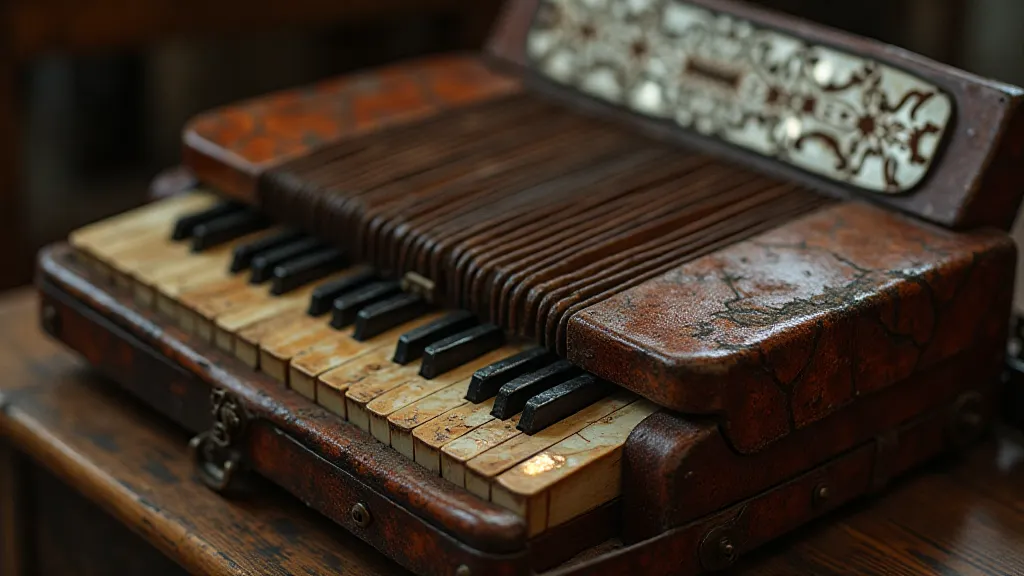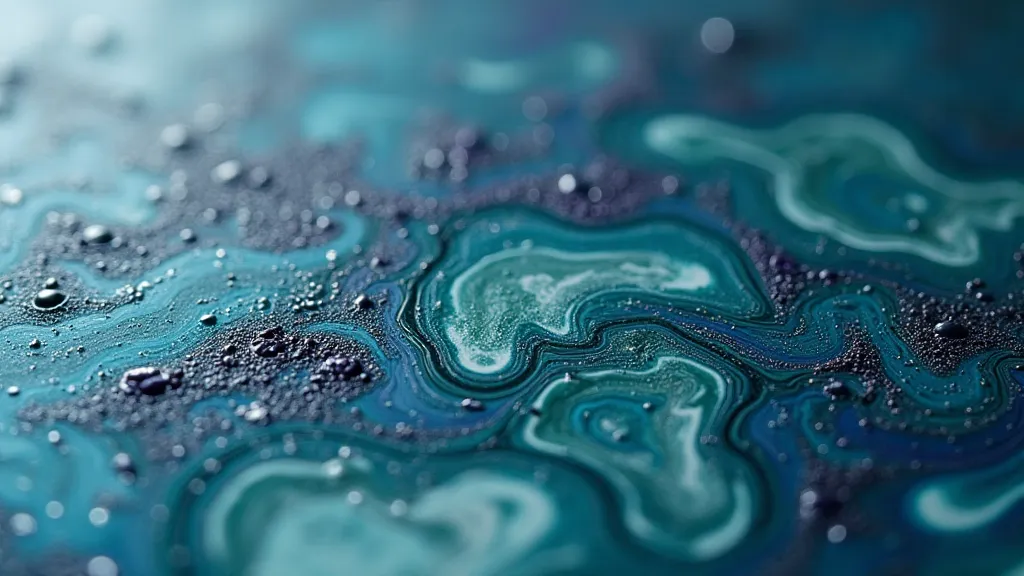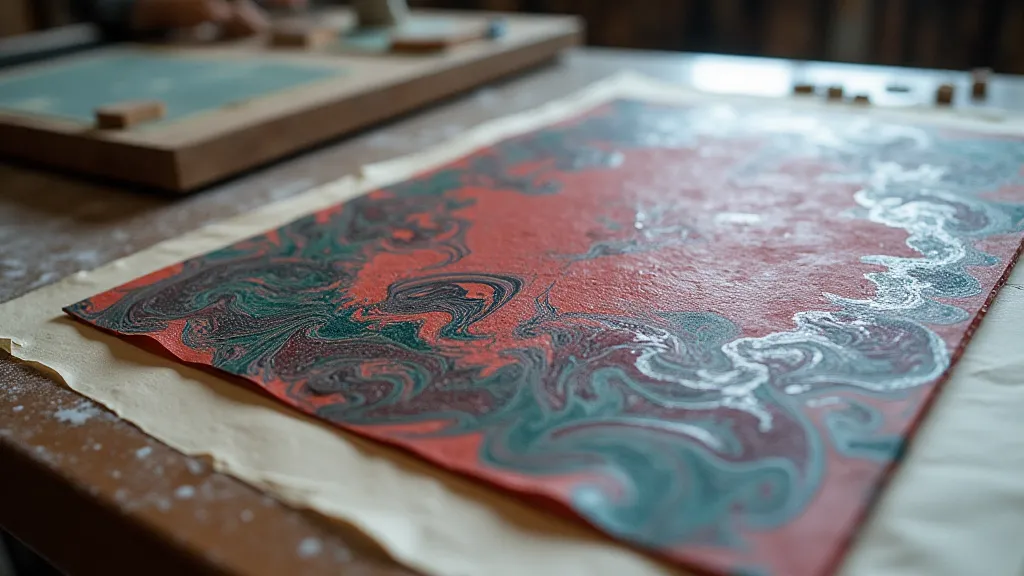The Dance of Dispersal: Allowing Your Narrative to Flow Freely
There’s a peculiar beauty in surrender. Not the kind born of defeat, but the quiet yielding to a process, an acceptance of the inherent unpredictability of creation. This sentiment sits at the heart of paper marbling, an art form that, at first glance, might seem deceptively simple, but holds within it a profound lesson for anyone who seeks to tell a story – be it on paper, in words, or in any other medium.
My introduction to paper marbling wasn’t planned. It happened organically, like the pigments themselves spreading across a vat of thickened water. I was clearing out my grandfather's attic, a dusty repository of forgotten memories, when I stumbled upon an antique accordion. Its bellows were stiff, its keys unresponsive, and a layer of grime obscured its once-lustrous finish. Holding it, I felt a pang of connection to a man I barely knew, a musician whose life echoed in the silent mechanism of this instrument.

The Alchemy of Water and Pigment
The accordion, like any finely crafted object, represented years of meticulous labor, a craftsman's dedication to his art. It mirrored, I realized, the essence of paper marbling. The process itself is deceptively straightforward: a thickened, often gelatinous, liquid bath (called a size) is created, and vibrant pigments are gently dropped onto its surface. The pigments, lighter than water, float, and with a touch of manipulated force – blowing, swirling, brushing – begin to expand and intermingle. The result is a chaotic, yet harmonious, tapestry of color.
There’s no pre-determined pattern. No blueprint for the swirling clouds of crimson, the tendrils of emerald green, the bursts of sapphire blue. The marbler isn't *creating* a design; they're facilitating a dance, allowing the pigments to disperse naturally, subtly guiding the flow, but ultimately surrendering to the inherent randomness of the system. This surrender, this acceptance of the unexpected, is where the magic lies.
A History Etched in Color
Paper marbling isn’t a modern invention. Its roots stretch back centuries, with variations practiced across cultures. The Turkish art of Ebru is arguably the most well-known and highly developed form, dating back to the 16th century. Japanese Suminagashi, using ink suspended in water, is another venerable example. European versions emerged later, often used to decorate endpapers of books, adding a touch of luxury and individuality to otherwise uniform tomes. The Medici family in Florence were known to commission marbled papers, showcasing their wealth and refined taste.
The historical context is crucial. Consider the meticulous craftsmanship required to create the size – traditionally made from animal gelatin, a laborious and precise process. Then there's the preparation of the pigments, often derived from natural sources like minerals and plants. The marbler wasn’t just applying color; they were engaging in a complex, almost alchemical, process, respecting the materials and understanding their behavior. Just as a seasoned accordion repairman understands the intricacies of each reed and valve, the marbler grasped the nuances of the size and pigments.
Finding Parallels in Narrative
My grandfather’s accordion and the act of paper marbling began to speak to me in a profound way. They highlighted a fundamental truth about storytelling: forcing a narrative is like attempting to control the pigments. The result will likely be stiff, lifeless, and lacking in genuine beauty. Just as the marbler must release their need for a specific outcome, a writer must allow their story to evolve organically.
Think about it. A writer might begin with a clear vision of the ending, a meticulously crafted plot outline. But often, the characters will take on a life of their own, the plot will twist in unexpected directions, and the narrative will flow in a way that diverges from the initial plan. Resisting this evolution can lead to a constricted, artificial piece of writing. Embracing it, allowing the story to surprise you, is where the truly captivating moments arise.

The Collector's Eye and the Restorer's Hand
The value of antique accordions, and marbled papers, lies not just in their beauty, but also in their history, their craftsmanship, and their imperfections. A pristine, factory-fresh accordion, while perhaps aesthetically pleasing, lacks the character of one that has been played, loved, and weathered the passage of time. Similarly, marbled papers, with their unique variations and subtle imperfections, are far more captivating than those produced through automated processes.
Collectors often seek out examples with provenance – a documented history. Knowing the marbler's identity, or the original purpose of the paper, adds layers of meaning and value. The restoration of these treasures is an art in itself. An accordion repairman must possess a delicate touch, a deep understanding of the instrument's mechanics, and a respect for its age. Similarly, restoring a piece of marbled paper requires careful cleaning and repair, avoiding any harsh chemicals or techniques that could damage the delicate pigments.
More Than Just Aesthetics
The process of paper marbling isn’s solely about creating aesthetically pleasing sheets of paper. It is, at its heart, a lesson in acceptance, a meditation on the beauty of imperfection, and a celebration of the unexpected. Just as holding my grandfather’s accordion connected me to a past I barely understood, creating marbled paper connects me to a lineage of artists who have embraced the dance of dispersal.
It’s a reminder that sometimes, the most beautiful creations arise not from forceful control, but from gentle guidance, from allowing the inherent qualities of the materials to shine through. And just as the faint, melancholic sound of an antique accordion can evoke a thousand unspoken stories, the swirling patterns of marbled paper can inspire a thousand new narratives.






